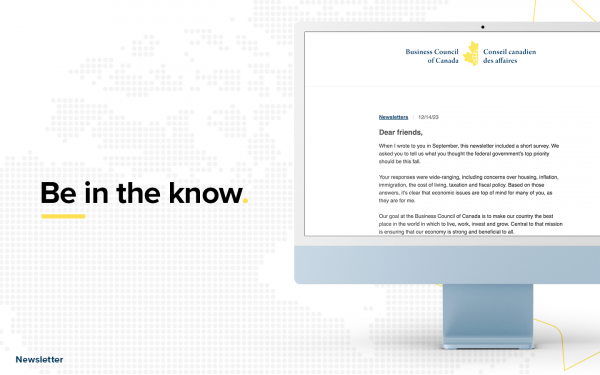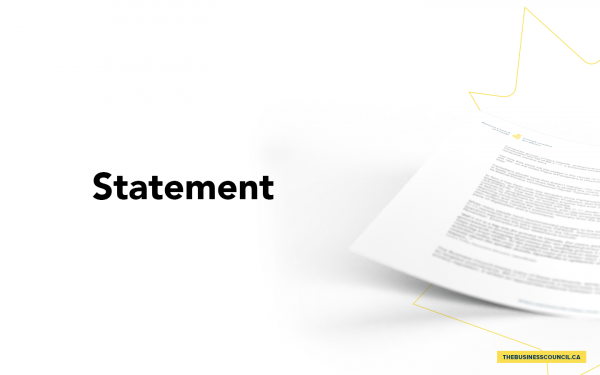Future-proofing Canadian innovation starts with equity in STEM education
As published by Penny Wise in The Waterloo Region Record
Canada has an appetite for innovation but it’s one that’s not always easy to satisfy, especially coming out of a pandemic.
Many business leaders rightfully recognize that investments in digital transformation and innovation will be essential for Canada’s economic recovery, future self-sufficiency, and collective social well-being.
At the same time, it’s no secret that Canadian innovation and entrepreneurship are often lagging. The Conference Board of Canada, for example, gave Canada a “C” grade on its 2021 Innovation Report Card, with some provinces scoring even lower.
Correcting this problem needs to start with our earliest potential innovators. Truly future-proofing Canada means removing barriers to equitable science, technology, engineering and math (STEM) education now. That can’t solely be on government. The private sector — beyond science companies alone — must take the lead.
During the early stages of the pandemic, 3M saw firsthand how important innovation is — specifically for domestic manufacturing. We were in a place to quickly ramp up manufacturing for critical products at a speed that no one else could.
STEM literacy and skills are the bedrock of this type of modern, collaborative manufacturing. That said, the future of our industry isn’t the only one that depends on STEM knowledge. From climate change to health equity, solutions to many significant real-world problems will come from STEM-based innovation. That’s why removing barriers to equitable STEM education shouldn’t only be a priority for traditionally science-led companies.
Those barriers are real. Too many people are still left out of quality STEM education, a poignant reality I’ve been learning more about through our 3M STEMtalk workshops with young talent. While the pandemic disrupted education for everyone, many minority groups and marginalized communities have long faced barriers to quality STEM education. That includes ethnic minorities, people with accessibility challenges, Indigenous and the LGBTQ+ community.
For example, for decades, STEM education has largely focused on western philosophies and perspectives, leaving little place for Indigenous knowledge. Accessibility is also often overlooked. Labs and educational resources often aren’t designed with accessibility in mind, effectively limiting how many people can participate in quality STEM learning.
Canadians recognize this issue. In our 2022 State of Science Index, the vast majority (87 per cent) agreed it’s important to increase diversity and inclusion in STEM fields. However, they also recognize the challenges, with 76 per cent agreeing there are barriers to students pursuing STEM, including access, the inability to afford a strong STEM education, and students having too many responsibilities to focus on STEM (including their home life and needing to make money). Most (67 per cent) also believe under-represented minorities often do not receive equal access to STEM education.
They’re right. Removing these barriers and others takes reimagining the content of our curriculums and the spaces in which all people can learn, plus creating — and funding — new opportunities for under-represented groups.
Government leadership is obviously essential. The Ontario government’s recent move to add more STEM learning to more grades, for example, is welcome news, but it’s only one part of the larger picture. This year’s State of Science Index also revealed that most Canadians are looking to the science community to do more to attract a diverse workforce.
As public expectations mount for the private sector to contribute to both our economic wellness and social change, businesses need to create clear career pathways, invite diverse voices into decision making and improve mentorship for young people in STEM. For our part, we established a 3M Advocacy Fund, which provides financial support to organizations and people who are removing hidden barriers and creating solutions to address STEM equity. For example, through a partnership with FIRST Robotics, we are expanding a program that delivers robotics to kids with specific disabilities.
What’s most important is to involve under-represented groups at every step. Their unique perspectives, knowledge and expertise are essential to creating solutions with real impact.
If this sounds like a big ask, it’s because it is — but the cost of doing nothing is high. To get back to a flourishing and competitive economy, we need to think about what recovery will look like, including how to get more people participating in innovation. That starts with putting equitable STEM learning on our agendas.











